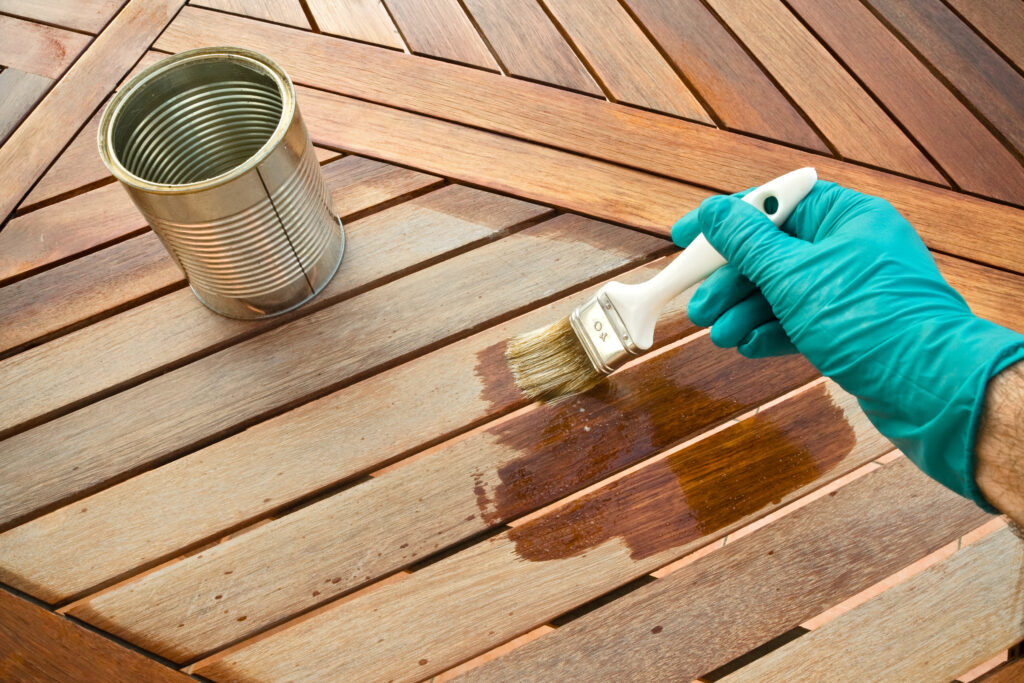Wood accents, be it furniture, paneling, or cabinetry, are a lovely addition to any home. Wood has a natural beauty that speaks for itself. Sealing wood is an important step toward protecting and preserving that natural beauty so your wood looks great for years to come.
Wood sealant is a protective coating property owners can apply to their wood to augment its beauty and protect the wood itself. Wood sealer is typically clear but gives a finished appearance to the wood it is applied to. There are many different kinds of sealers, and homeowners must choose the right one for their wood.
Sealing wood and staining it are distinct processes. Staining adds pigmentation without all the same sealing qualities of a dedicated sealant. Staining does not block out water.
Does Wood Need to Be Sealed?
Wood has some natural vulnerability because of its porosity and inherent water content. Wood can soak up the liquids it comes into contact with, discoloring it or distorting it by swelling. Some woods, if they become too dry, can warp and crack as well. Sealing wood is a good way to prolong the life and wear of your wood for a long time.
Sealing your wood isn’t necessary, per se, but it does protect your investment. It prevents wood from becoming discolored or stained by liquids and from absorbing water. It can also provide a protective barrier against wear and tear. Sealed wood has a more finished and polished look that many property owners prefer. Protective topcoat is available in transparent varieties so you do not need to feel like you have to stain your wood in order to seal it.
With all this in mind, it is important to remember that wood must be sealed properly in order to properly protect it. Sealing wood incorrectly will leave it vulnerable during conditions of high humidity or other exposure to moisture. If you want to keep your wood from warping, swelling, and even rotting, be sure to seal it properly.
What Is the Best Thing to Use for Sealing Wood?
The choice of wood sealer often comes down to oil-based, water-based, and latex-based sealers. Each method has its advantages and disadvantages. For example, Tung oil and linseed both provide a beautiful protective hand-rubbed finish, but hand-rubbed oils tend to yellow over time, so they are not ideal for lighter woods like ash or pine.
A stain-sealant combo will waterproof and finish wood simultaneously. Choose the right sealant for your project before you begin sealing wood. Consider these common options:
Polyurethane
The wide variety of both oil- and water-based polyurethane wood sealers give property owners options for different finish effects. These sealers don’t yellow over time, so they are safe for light-grained woods. Oil-based polyurethane is highly durable but the brushes used to apply it must be cleaned with mineral spirits or turpentine. Water-based polyurethane sealers dry rapidly. The fumes of both oil- and water-based polyurethane fumes release toxic volatile organic compounds until they have finished curing. Protective gear during application is essential.
Varnish
Varnish also has many options, including marine varnish which is resistant to UV damage and spar varnish which blocks water stains wonderfully. The finish of a coat of varnish is like a hard scratch-resistant shell that won’t yellow over time. Varnish also has to be cleaned up with mineral spirits or turpentine, and its fumes are toxic during the curing process as well.
Lacquer
Lacquer has a variety of sheen choices, but beware of a yellowing process over time. For this reason, it is typically better for wood of a deeper tone. Lacquer thinner is available for sealants that are too thick. Once again, be wary of toxic volatile organic compounds as the lacquer cures.
How Do You Apply Wood Sealer?
Each wood sealer should be applied according to manufacturer instructions. Work in a well-ventilated area to avoid breathing in any volatile organic compounds. Before you begin sealing wood, make sure that wood is clean and sanded. Sanding opens up the pores to receive more sealant.
Stir your sealant thoroughly before you begin, but do not shake the can or stir too vigorously. Stirring makes sure the sealant is homogenized, but being too enthusiastic will introduce air bubbles that don’t fade when the sealant dries. Using a clean natural-bristle or long-grained brush and working quickly, apply the sealer evenly across the wood.
Give plenty of time for the sealant to soak in, then remove any excess sealer from the wood’s surface with a clean, dry cloth. Some woods will require multiple coats of sealer. Make sure your wood is completely dry before adding another coat.
